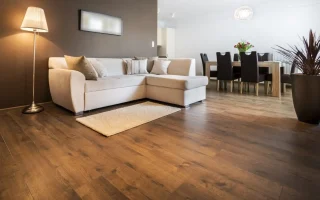Post Preview a backsplash is a great way to add style and functionality to your kitchen. There are a lot of options when it comes to materials, colors, and patterns. It’s important to take your time when choosing the right backsplash. Bringing home samples to see their appearance in your kitchen lighting is also helpful.
Material
Backsplash tile can come in various materials, shapes, sizes, and colors. This abundance of choices can feel overwhelming. However, it also means you can find the perfect backsplash to match your style and fit in with the rest of your home decor when shopping for backsplash tile. For example, ceramic tile is commonly used for backsplashes because it looks sleek and modern and can fit many design styles. It is also easy to clean and dries quickly. Other materials, like marble or slate, are more delicate and require special care. However, they offer a luxurious look that can add elegance to a kitchen. It is important to understand the pros and cons of each material before making a final decision. For instance, a travertine backsplash may need to be resealed periodically to maintain water resistance. Marble also scratches easily. Backsplash tiles are typically kiln-fired and sealed, which closes the porosity of the surface to prevent the absorption of liquids and stains. Choosing the color of your backsplash is also an important factor. It can tie the kitchen together or make a bold statement. Matching the color to your countertops can create a cohesive look, or opt for an accent color that pops against a neutral palette. Be sure to live with the color and sample it against your countertop and cabinets to see how it reflects light throughout the day.
Color
Backsplash tiles come in various colors, making your design your own. You can choose a simple and neutral tile color that will compliment the countertops and cabinets, or you can go bold with a pattern or shape. Some people love to have a monochromatic backsplash, matching the tile to the counters and other cabinetry for a clean look that always goes in style. Others prefer to add a bit of texture and contrast with the grout. Choosing the right grout color may seem minor, but it is important to consider how you want your kitchen to look. One mistake many homeowners make is picking a tile and only thinking about how it looks on a small wall section. The color and pattern of the tiles will change with scale, so it is crucial to see how they look as they cover an entire wall before making a final decision. Another factor to remember is how much you are willing to spend on the project. Trendier tiles with intricate designs and colorways can be more expensive, so deciding how much you are comfortable paying upfront will help narrow your options. Once you know your budget, shopping around and taking home samples will give you an idea of what is possible for your space.
Shape
Backsplash tile comes in various shapes, and picking the right one is critical to ensuring your backsplash is cohesive with the rest of your kitchen design. Consider the style of your cabinets, countertops, and lighting to ensure you’re choosing a tile that fits in with the overall look of the space. Traditional square tile is a classic choice, but many other options exist. For instance, herringbone tile is an intricate pattern that can be used in several styles. Chevron tile is a popular alternative, creating a geometric, modern look. Many patterned tiles are also available in a grid shape. Regardless of your style, it’s essential to calculate how much backsplash tile you’ll need before starting your project. Take the length of your backsplash and multiply it by the height to determine how many tiles you’ll need—then add a 10% overage in case of damage or odd cuts. This will help you avoid running out of tiles halfway through your installation. Remember to account for trim pieces as well. Backsplash tiles are often arranged into pre-made patterned sheets, so ensure you know how many small pieces come with the full sheet. You’ll also want to ask about the thickness of the primary tile and decorative moldings. They should match glaze and consistency to create a seamless appearance on the wall.
Size
Backsplashes are installed above counters and cabinets, so the size of your backsplash tiles can greatly impact the overall look of your kitchen. There are a variety of tile sizes to choose from, and each has its distinct aesthetic. A backsplash made up of a single tile size creates a sleek, minimalist look, while one that incorporates varying tile sizes will add more visual complexity. Choosing a tile style can also greatly impact the overall look of your kitchen. Some options, from classic subway tile to wood-look porcelain, are timeless and will stand the test of time. Mixing styles can also be a fun way to create a unique backsplash design that will impress guests and family members alike. The color of your backsplash can have just as much of an impact on the look and feel of your kitchen as the material and shape. White backsplashes are traditional, but you can choose something more vibrant, like green, to establish a forest-inspired theme in your kitchen. There are many things to consider when picking the perfect backsplash for your home, but exploring the various options is the best place to start.




